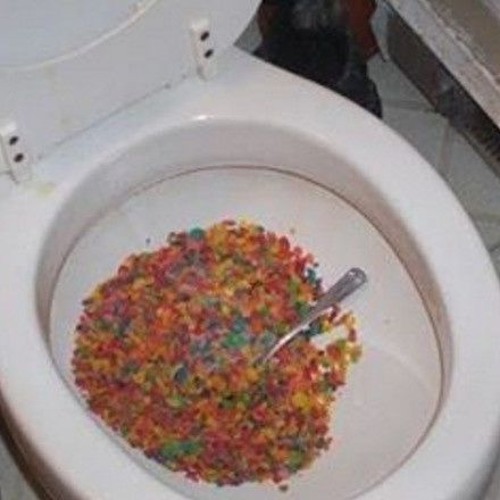Is it Possible to Dispose of Food in the Toilet?
Is it Possible to Dispose of Food in the Toilet?
Blog Article
This great article listed below on the subject of Think Twice Before Flushing Food Down Your Toilet is absolutely entertaining. Don't miss it.

Intro
Lots of people are frequently confronted with the predicament of what to do with food waste, particularly when it comes to leftovers or scraps. One usual question that emerges is whether it's alright to purge food down the bathroom. In this write-up, we'll explore the reasons that people could take into consideration flushing food, the effects of doing so, and alternate approaches for proper disposal.
Reasons why people might consider flushing food
Lack of awareness
Some people may not know the possible injury triggered by flushing food down the bathroom. They might wrongly believe that it's a safe method.
Convenience
Flushing food down the commode may look like a fast and easy service to throwing away undesirable scraps, especially when there's no close-by garbage can available.
Negligence
In some cases, people might simply pick to flush food out of sheer negligence, without taking into consideration the consequences of their actions.
Repercussions of flushing food down the bathroom
Ecological influence
Food waste that winds up in waterways can contribute to pollution and damage water ecological communities. Additionally, the water used to flush food can strain water resources.
Plumbing issues
Flushing food can result in stopped up pipelines and drains pipes, causing costly plumbing repairs and hassles.
Types of food that ought to not be flushed
Fibrous foods
Foods with fibrous textures such as celery or corn husks can obtain entangled in pipelines and cause clogs.
Starchy foods
Starchy foods like pasta and rice can absorb water and swell, leading to blockages in pipelines.
Oils and fats
Greasy foods like bacon or food preparation oils need to never ever be purged down the bathroom as they can solidify and cause blockages.
Proper disposal methods for food waste
Using a waste disposal unit
For homes outfitted with waste disposal unit, food scraps can be ground up and purged with the plumbing system. Nonetheless, not all foods appropriate for disposal in this way.
Recycling
Specific food packaging materials can be reused, lowering waste and lessening environmental impact.
Composting
Composting is an eco-friendly means to throw away food waste. Organic products can be composted and used to improve dirt for gardening.
The value of proper waste management
Minimizing environmental harm
Appropriate waste management techniques, such as composting and recycling, help reduce air pollution and maintain natural deposits for future generations.
Shielding plumbing systems
By avoiding the practice of flushing food down the toilet, property owners can stop expensive pipes repairs and maintain the honesty of their plumbing systems.
Final thought
In conclusion, while it might be tempting to flush food down the commode for benefit, it's important to comprehend the potential repercussions of this activity. By embracing proper waste monitoring practices and taking care of food waste properly, people can add to healthier pipes systems and a cleaner setting for all.
FLUSH FOOD DOWN THE TOILET?
FLUSHING FOOD CAN CAUSE BLOCKED DRAINS IN YOUR HOME
All of the plumbing fixtures in your home are connected to the same sewer pipe outside of your home. This outdoor sewer pipe is responsible for transporting all the wastewater from your home to the Council sewer mains. Even small pieces of food that go down the kitchen sink can cause problems for your sewer. It should therefore be obvious that flushing larger bits of food, such as meat, risks a clog in either the toilet itself or the sewer pipes. Flushing greasy food is even more problematic because oil coagulates when it cools, coating the interior lining of your pipes.
THE TOILET IS NOT A BIN
Food isn’t the only thing that people shouldn’t be flushing down the toilet. People use the toilet to dispose of all kinds of things such as tampons, makeup wipes, dental floss, kitty litter and even underwear. Water goes to great lengths to educate residents about the high costs and stress placed on wastewater treatment systems simply from people flushing the wrong stuff down the toilet. It costs taxpayers millions of dollars each year, and homeowners thousands in blocked drain repairs.
FLUSHING FOOD IS A WASTE OF WATER
Flushing food is a waste of our most precious resource - water. In June this year Level 1 water restrictions were introduced to protect water supply from drought conditions. Much of New South Wales continues to be affected by prolonged drought with recent figures revealing up to 97 per cent of the state remains in drought. Depending on whether you have a single or dual flush toilet, every single flush uses between five and 11 litres of water. In the current climate this is a huge amount of water to be wasting on flushing food that should be placed in the bin (or better yet, the compost).
https://www.jabplumbingsolutions.com.au/blog/can-you-flush-food-down-the-toilet

As a devoted person who reads about What Can Happen If You Flush Food Down the Toilet?, I thought sharing that excerpt was a good idea. Appreciated our blog? Please quickly share it. Let others locate it. Thank you for taking the time to read it.
This Post Report this page